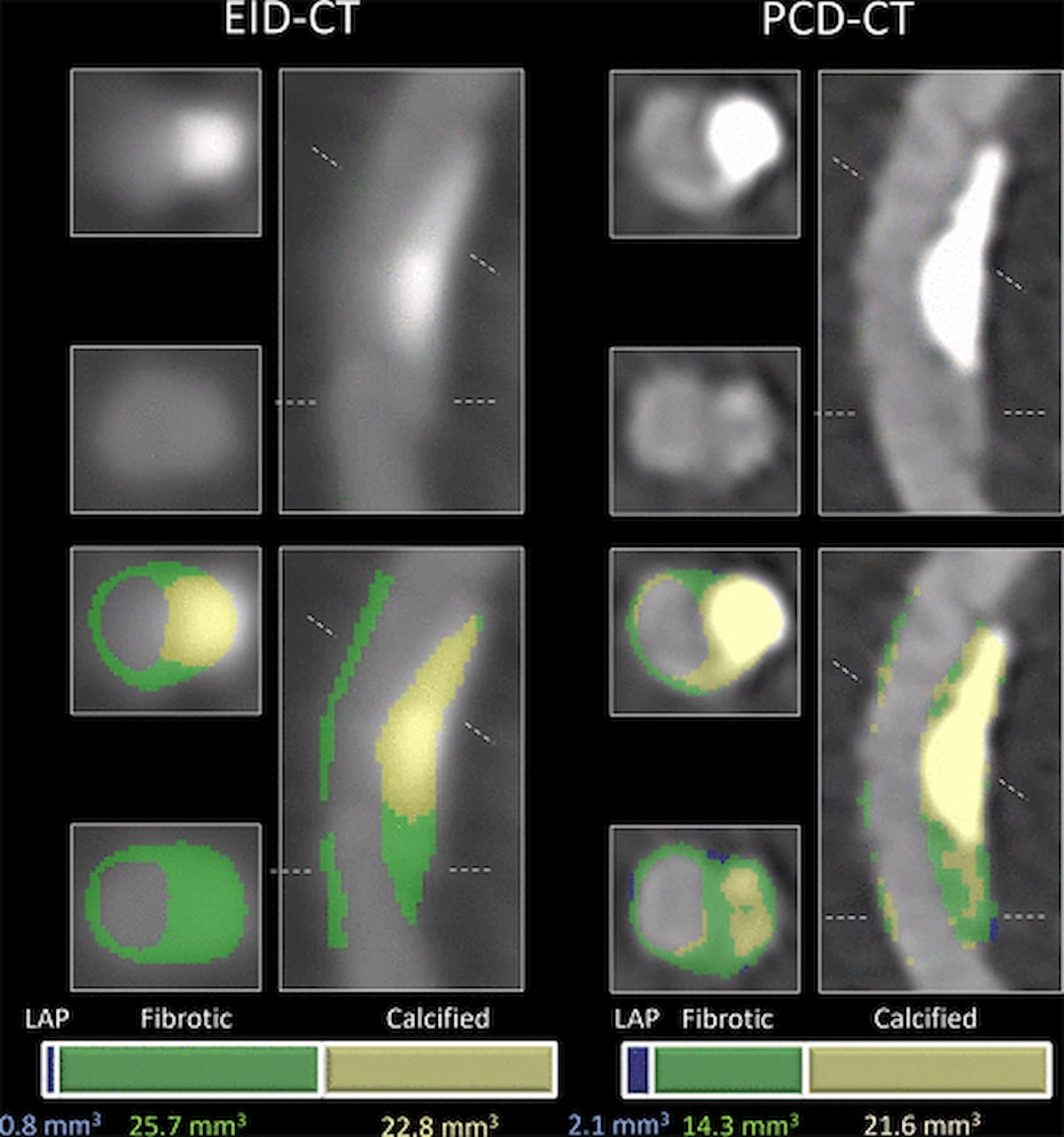New Analysis Forecasts Substantial Cost Savings with the Use of Photon Counting CT for CCTA
The use of ultra-high-resolution photon-counting CT in the evaluation of stable chest pain may significantly reduce follow-up tests and invasive coronary angiography (ICA) procedures, possibly resulting in millions in health-care cost savings, according to a cost-effectiveness analysis presented recently at the European Congress of Radiology.
By facilitating significant reductions in follow-up tests and invasive coronary angiography (ICA) procedures, the use of ultra-high resolution photon-counting detector (UHR PCD) CT for patients undergoing coronary CT angiography (CCTA) could facilitate millions in health-care cost savings.
In a cost-effectiveness analysis presented recently at the European Congress of Radiology (ECR), researchers employed Monte Carlo simulations to estimate projected costs for UHR PCD-CT and energy-integrating detector (EID)-CT for CCTA. The decision and simulation model incorporated aggregate health-care expenditures from a hospital billing system and accuracy statistics for the use of UHR PCD-CT and EID-CT in assessing 55 coronary lesions in patients who had CCTA and subsequent ICA procedures, according to the study authors.
Here one can see a comparison of energy-integrating detector (EID) CT (left images) and photon-counting detector (PCD) CT (right images) in depicting detection and segmentation of a partially calcified plaque in the left circumflex coronary artery. Recent research presented at the European Congress of Radiology (ECR) conference estimated that using ultra-high resolution PCD-CT in lieu of EID-CT for stable chest pain assessment may facilitate a nearly 19 percent reduction in functional follow-up tests with coronary computed tomography angiography (CCTA). (Images courtesy of Radiology.)

Projecting costs for 15,000 patients with stable chest pain, the researchers estimated that UHR PCD-CT in contrast to EID-CT could reduce functional follow-up tests by 18.9 percent (5,135.7 vs. 6,330.3) and ICA procedures by 6 percent (1,360.2 vs. 1,447.7). The study authors also forecasted a 9.4 percent reduction in complications related to major procedures with the use of UHR PCD-CT.
“Over a 10-year expected life expectancy, PCD-CT led to an average cost saving of $794.50 ± 18.50 per patient and an overall cost difference of $11,917,500 ± 4,350,169,” posited lead study author Milan Vecsey-Nagy, M.D., who is affiliated with the Department of Radiology and Radiological Science at the Medical University of South Carolina in Charleston, S.C., and colleagues.
While acknowledging the limited number of coronary lesions in the development of the decision and simulation model, the study authors maintained that PCD-CT can have a significant impact in the evaluation of stable chest pain.
“PCD-CT has the potential to reduce the financial burden on healthcare systems and procedure-related complications for stable chest pain patients with coronary calcification when compared to EID-CT,” maintained Vecsey-Nagy and colleagues.
(Editor’s note: For related content, see “Study Examines Potential of Ultra-High Spatial Resolution Photon-Counting CT for Coronary Plaque Quantification,” “Can Quantum Iterative Reconstruction Reinvent Photon-Counting CT Technology?” and “Photon-Counting CTA for Patients with PAD: What the Research Reveals About Assessment for Stenotic Lesions.”)
Reference
1. Vecsey-Nagy M, Emrich TS, Tremamunno G, et al. Cost-effectiveness of ultrahigh-resolution photon-counting detector coronary CT angiography for the evaluation of stable chest pain. Presented at the European Congress of Radiology (ECR), February 26-March 2, 2025, Vienna, Austria. Available at https://www.myesr.org/congress/ . Accessed March 6, 2025.
FDA Clears AI Assessment of Ischemic Core Volume on CT with Brainomix 360 Platform
April 8th 2025For patients with acute ischemic stroke, research has demonstrated that automated assessment of ischemic core volume on brain CT scans via the Brainomix 360 software is equivalent to that derived from CT perfusion.
Study with CT Data Suggests Women with PE Have More Than Triple the One-Year Mortality Rate than Men
April 3rd 2025After a multivariable assessment including age and comorbidities, women with pulmonary embolism (PE) had a 48 percent higher risk of one-year mortality than men with PE, according to a new study involving over 33,000 patients.
The Reading Room: Racial and Ethnic Minorities, Cancer Screenings, and COVID-19
November 3rd 2020In this podcast episode, Dr. Shalom Kalnicki, from Montefiore and Albert Einstein College of Medicine, discusses the disparities minority patients face with cancer screenings and what can be done to increase access during the pandemic.